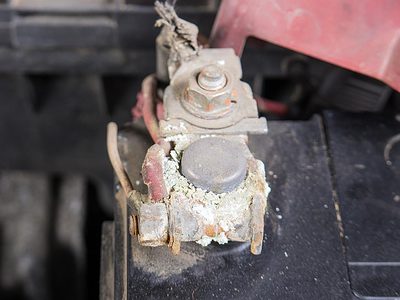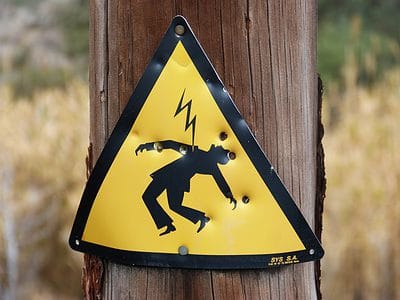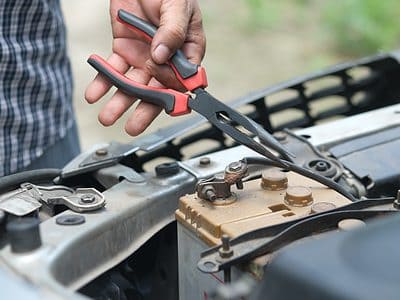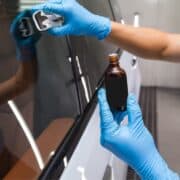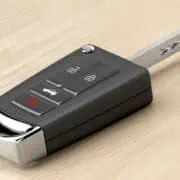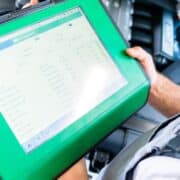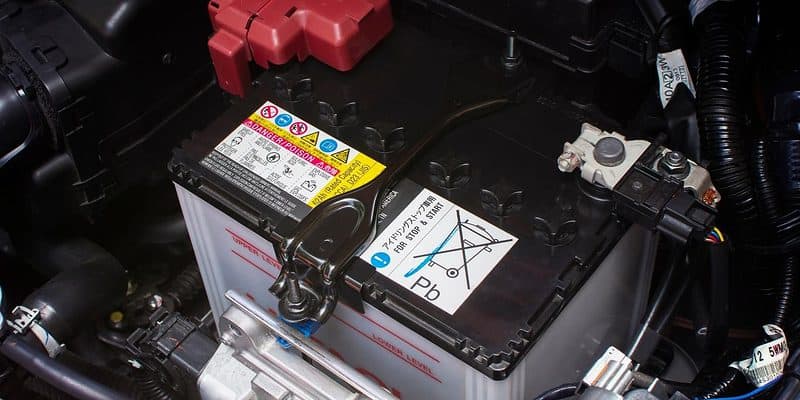
Readers like you help support TorqueDial. When you make a purchase using links on our site, we may earn an affiliate commission at no extra cost to you. All opinions remain ours. Read more.
There’s no worse feeling than getting in your car and turning your key, only to find that your battery doesn’t have enough juice to start the engine. It’s truly a horrible experience.
But it’s made even worse by cold temperatures that cause even perfectly fine standard batteries to fail more often.
Thankfully there’s a solution to this problem in the form of winter batteries. They’re made specifically to withstand cold weather, and they do a really good job if you buy the right one.
We’ve put together some of the best car batteries for cold weather to make your quest to find a solution easier. Read on!
Types of Car Batteries for Cold Weather
All automotive batteries are similar. They are all rechargeable, have lead-acid, and typically function the same way by supplying the power that starts the engine. However, their internal construction is what differentiates them. This disparity makes all the difference, as it determines how well the battery would withstand harsh temperatures. Below are the various types of batteries:
Traditional Lead-Acid Battery
Traditional lead-acid batteries are filled with a liquid electrolyte and produce power by converting chemical energy to electrical energy. Lead-acid batteries were the norm—all vehicles had them, and maintenance was a vital part of the car owner’s care routine. Recently, they’ve been outfaced by AGM batteries.
Typically, lead-acid batteries are heavy but can supply relatively high currents. That’s one reason why they’re still predominant in older car models. However, they charge slowly. They can take up to 16 hours to attain a full charge. They are also very prone to leaks and spills. But they are way cheaper than AGM batteries.
Absorbed Glass Mat (AGM) Batteries
AGM batteries are heavy-duty and designed to handle constant recharging. They do not need active liquid to produce electricity, so there is no risk of spilling and leaking like with acid-lead batteries. Presently, it’s a standard for most vehicles to come with an AGM battery straight from the manufacturer. That’s mainly because of its benefits, such as electronic safety and fuel-saving function. They are also completely maintenance-free.
However, they still come with setbacks. For example, they can’t be used interchangeably with flooded batteries since they are more heavy-duty. So if the need arises, you’ll have to do a software reconfiguration on your vehicle’s electrical system, in which case, you’d have to hire a professional.
Flooded Batteries
Flooded batteries, also known as wet cell batteries, are the most commonly used batteries. This is because they offer better performance when it comes to your engine’s start and stop functions than traditional lead-acid batteries. And you can get them in a variety of shapes and sizes. They are also the cheapest batteries on the market since they have the weakest internal construction and are prone to failure.
The drawback of these batteries is that they are not sealed, allowing the gases produced during the electrolyte reactions to be vented externally, making them less eco-friendly. You also have to do maintenance by routinely adding water to replace the lost electrolytes. Otherwise, the plates may corrode when the electrolyte level drops and they become exposed to air.
Choosing the Best Car Battery for Cold Weather
When selecting the best car battery for cold weather, there are certain factors you should consider. Some of them are:
Cold Cranking Amps
Cold cranking amps (CCA) is the most essential factor when choosing a battery for cold weather. It is the number of amps the battery can provide at cold temperatures. Simply put, CCA measures how well a battery can start a car engine in cold weather and is based on a standard 12V battery at 0°F over 30 seconds. Naturally, you’d want a high CCA battery to fire up the engine even when it’s very cold.
Regular car batteries don’t have a CCA rating because it’s not an essential feature for warm weather performance. Also, the battery components are not meant to handle intense cold temperatures. Therefore, it should be easier to identify the best cold-weather battery with the CCA rating.
Reserve Capacity
The reserve capacity is another factor to consider when considering a battery for cold weather. It is the number of minutes a fully charged battery will last before it drops under 10.5V with a 25 amp discharge.
A battery with a high reserve capacity is a bonus because it helps to power various components, such as power windows, USB and cigarette lighter (auxiliary power) ports, and so on, when the alternator malfunctions. It mainly comes in handy if you drive a vehicle with auto/stop or with additional accessories requiring extra power.
Vibration-Resistant
Getting a vibration-resistant battery will count for so much. This is because when batteries vibrate in place, they can suffer mechanical and high-impact shocks that can damage their internal components. This can severely affect the battery, typically shortening its lifespan.
In some scenarios, the battery gets overly noisy, and you’d have to suffer through the never-ending buzz as you drive. For this reason, you should only go for battery models designed with tightly packed cells and robust shells to resist vibrations.
Maintenance-Free
If you’re the kind of person who likes to install a battery and forget about it, you should consider buying a maintenance-free one. Maintenance-free batteries are essentially sealed and do not require you to top them off to replenish the electrolytes, as in the case of a wet battery.
Typically, AGM batteries are sealed except for a small hole to release the corrosive gases. The water loss is practically insignificant in that case. Maintenance-free batteries also have a longer lifespan due to the lower self-discharge rate than vented batteries.
Size
An excellent battery is useless if it can’t fit in your car. Car batteries for cold weather are generally bigger and heavier than regular batteries ( although that’s not always the case). This is why you should always double-check whether the battery will fit your vehicle, especially if your engine trunk/bay has limited space.
To get an idea of how big the battery of your choice is, check out its group size. This is an industry-standard metric that indicates the physical size of a battery. To select the right size, compare the group size of the cold-weather battery you want to purchase with that of your current battery and make sure they match. That said, some cars can accommodate slightly larger batteries with some adjustment, so look out for that.
Warranty
The final factor to consider when searching for the best cold-weather battery is “warranty.” It’s an unspoken standard that the best products always have the best warranties. This is because the length of the warranty tells you what the manufacturer thinks of the quality of their product.
Car batteries usually last for at least three years. So, most of the warranties offer around one or two years. Ideally, you want the most extended warranty coverage, but ensure you make adequate inquiries and find out whether the manufacturer honors the terms of the warranty.
With these vital elements in mind, let’s look at the best car batteries for cold weather.
Best Battery for Cold Weather Overall: Optima Redtop Starting Battery
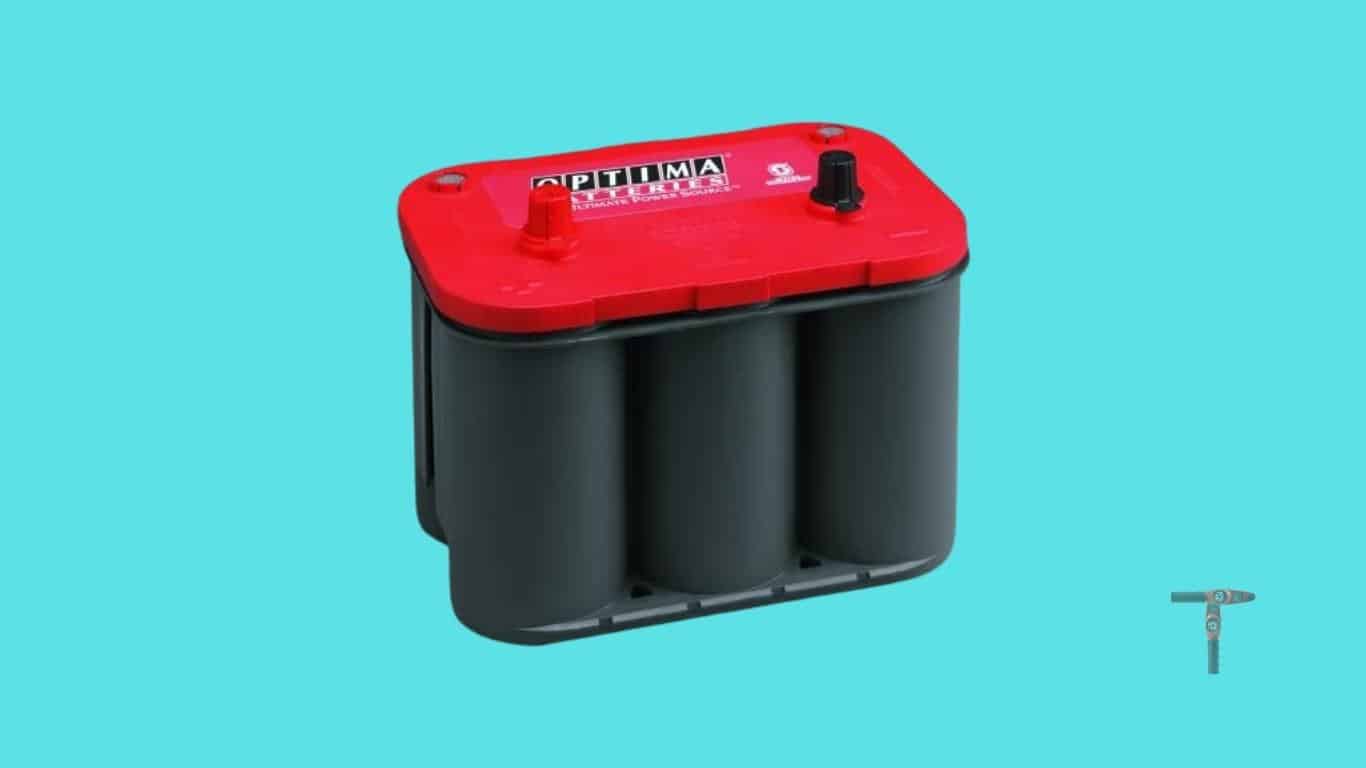
Optima is well-known for producing high-quality, reliable batteries, and the Optima redtop starting battery is no exception. Designed explicitly for starting cars in the cold, it provides a cold cranking amperage of 800, suitable for delivering enough power to turn on your engine. The battery allows fast conductivity, which makes recharging easy.
With this battery, you can also worry less about a faulty alternator, as it has a reserve capacity of 100 minutes. This should power your vehicle’s electronic systems long enough till you get the alternator issues fixed. As with other Optima batteries, it features SpiralCell technology for cleaner and more precise power output.
This battery has a solid, dark gray casing (with a group size of 34) that is properly sealed, so there are no leakages and contaminants don’t enter the unit. The case is also designed to resist mechanical vibrations and shock—it’s supposedly 15 times more vibration-resistant than other batteries. This ensures that it functions reliably over a long period.
The Optima redtop is an excellent choice for almost any vehicle, thanks to its various adapters for fitting. Pair that with its high CCA rating and trustworthy brand, as mentioned earlier, and it seems like the perfect battery. However, this is not necessarily the case. The battery struggles to power vehicles with high-drain electronics, such as sound systems or DVD players.

Optima Redtop Starting Battery
- Cold Cranking Amps: 800
- Reserve Capacity (Minutes): 100
- Group Size: 34
- Voltage: 12 Volts
- Weight: 37.9 Pounds
- High CCA rating
- Suitable for most vehicles
- Various adapters included for fitting
- Fast recharge
- Not for high-drain electronics
Best Premium Battery for Cold Weather: Odyssey 35-PC1400T Automotive Battery
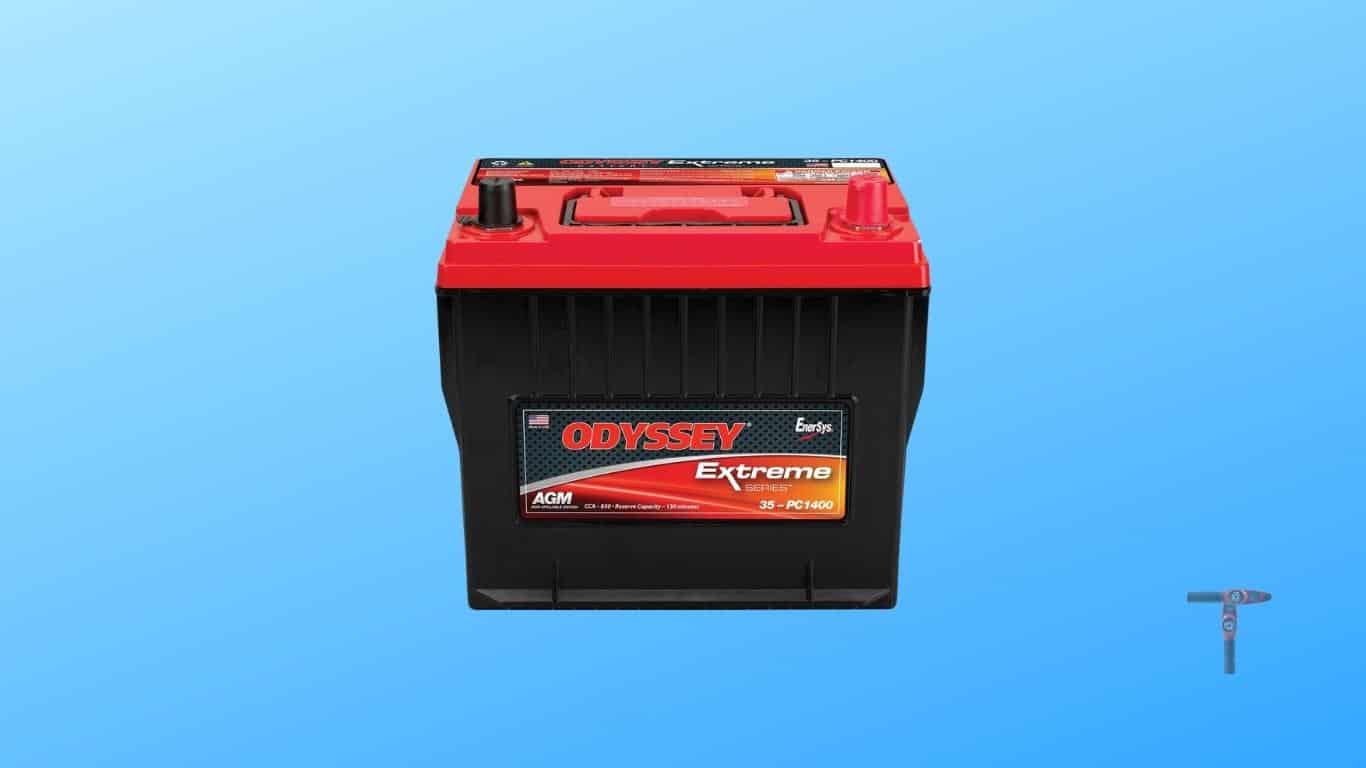
Odyssey 35-PC1400T automotive battery is one of the most potent car batteries on this list when it comes to cold-cranking amps. With a CCA rating of 850, it will have no problem starting any car, regardless of how cold the weather may be. It also has a reserve capacity of 134 minutes and an impressive expected service life of up to 10 years.
Furthermore, the battery charges very quickly (significantly faster than most batteries), getting a full charge in under 4 hours. This makes it suitable for people who make regular short journeys, as it doesn’t take long for the alternator to recharge the battery.
That said, this battery is not meant to be left unused for a long time. So, if you do not start your car for prolonged periods, it may run flat before the next time you start the car. To solve this problem, you can use a battery maintainer. But you shouldn’t have any issues if you drive your vehicle at least once a month.
Although this battery is relatively costly, it’s still a good choice. It has around twice the power to three times the lifespan compared to conventional car batteries. So you won’t need to replace it as often as you would a cheaper battery. Plus, it’s guaranteed to start your car even in freezing conditions.

Optima Redtop Starting Battery
- Cold Cranking Amps: 800
- Reserve Capacity (Minutes): 100
- Group Size: 34
- Voltage: 12 Volts
- Weight: 37.9 Pounds
- High CCA rating
- Suitable for most vehicles
- Various adapters included for fitting
- Fast recharge
- Not for high-drain electronics
Best Cold Weather Battery For Extreme Power: Odyssey 65-PC1750T Automotive Battery
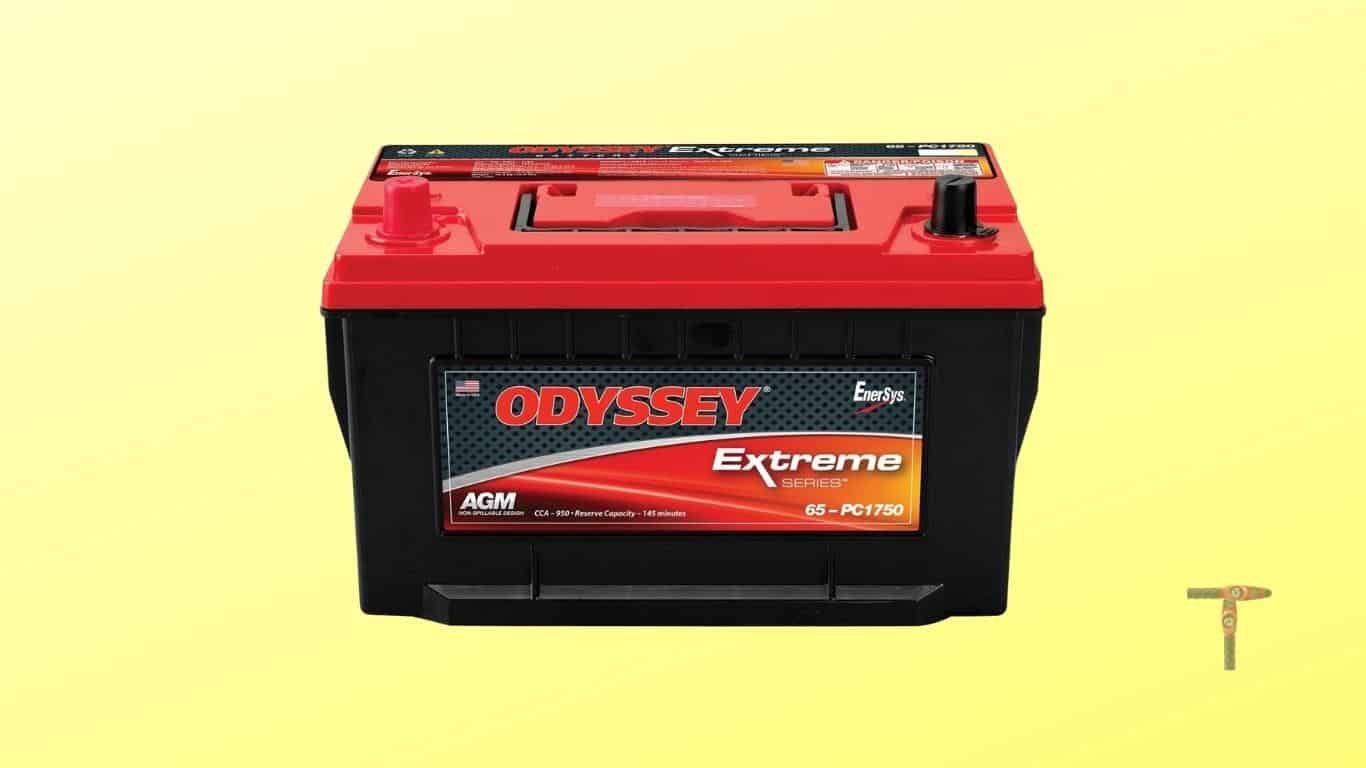
Odyssey 65-PC1750T automotive battery is undoubtedly one of the best batteries on the market. It offers insane power to start any engine, even in sub-zero temperatures. In fact, when it comes to quality, you could say that this battery is a bit of an “overachiever” for many reasons.
For starters, this battery comes with a CCA rating of 950 compared to the 250–600 for most batteries in the market. This means you’ll never have to worry about your vehicle not starting in adverse weather, be it a truck or an SUV. And it also has a whopping 145 minutes of reserve capacity.
Unlike regular batteries that can only supply a large burst of current for a really short time, this battery uses deep-cycle technology to supply a constant amount of current over an extended period. This is because it uses thicker plates, which allow it to give off a deep discharge consistently. And this is something that would wear down a regular battery fairly quickly.
One feature you’ll immediately notice about the Odyssey 65-PC1750T is its military-grade design. It’s supposedly resistant to intense vibrations and extremes of temperatures. Thus, this battery might be an excellent option if you drive a utility vehicle and often go off-roading in cold weather. It’s also leak-proof, meaning you won’t have to scrub any dust off the battery terminals at any time.
Finally, considering how long it takes an average battery to charge (from 8 to 10 hours), it’s quite a pleasant surprise that this battery charges as fast as it does. It only takes around 4 to 6 hours to charge fully, despite its size. The only drawback to this battery is that it can only be mounted in an erect position, meaning that it may not fit into smaller cars with limited space.

Odyssey 65-PC1750T Battery
- Cold Cranking Amps: 950
- Reserve Capacity (Minutes): 145
- Group Size: 65
- Voltage: 12 Volts
- Weight: 58 pounds
- Very high CCA
One of the quickest recharging batteries on the market
Leak-proof
Very sturdy design
- Can't be mounted in an inverted position
Best Budget Battery for Cold Weather: ACDelco 48AGM Automotive Battery
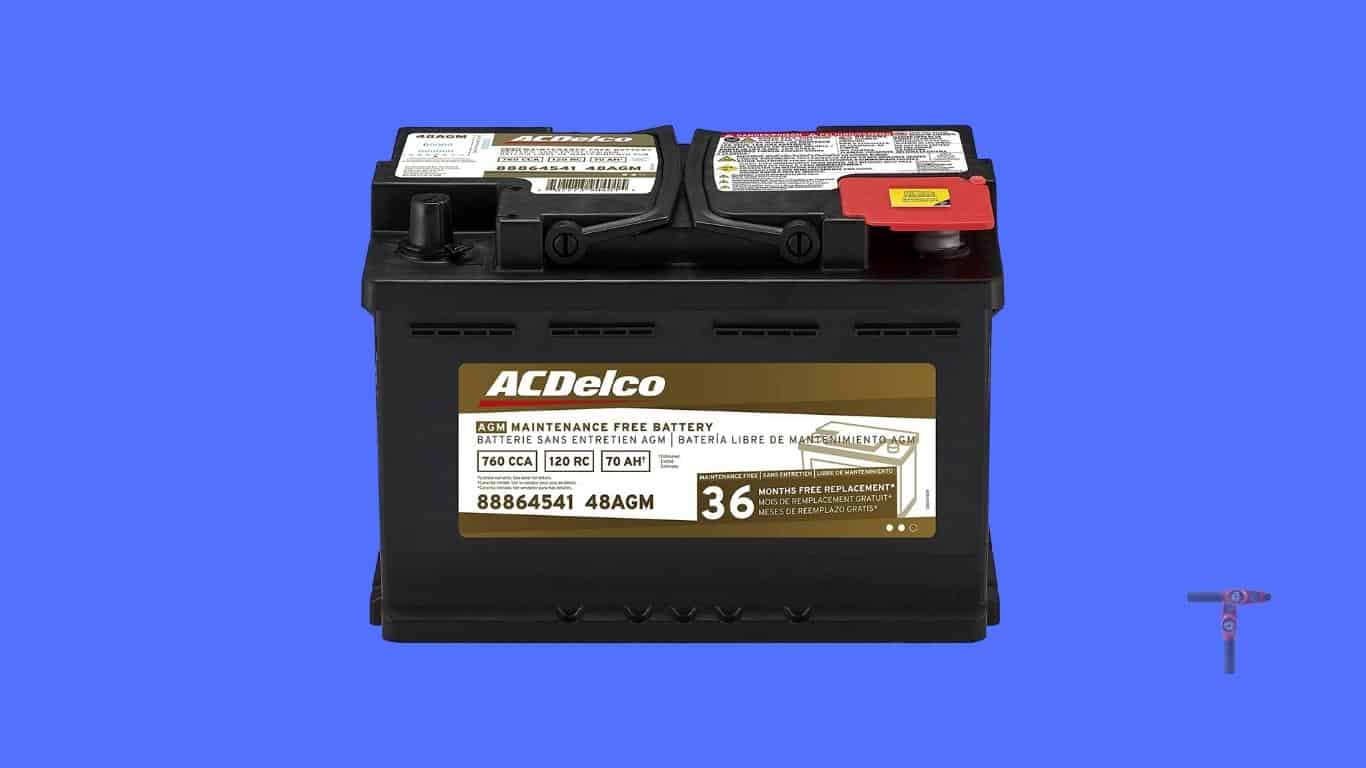
A good cold-weather car battery doesn’t have to cost an arm and a leg, as proven by ACDelco 48AGM automotive battery. Although it’s one of the cheapest cold-weather car batteries on the market, it has enough power and a good reserve capacity (120 minutes) to ensure your car starts in a cold climate. It has an average CCA rating of 760, but this is more than sufficient unless you have a car with a massive engine.
This battery uses a high-density negative paste, which improves overall performance and longevity compared with other batteries. And it uses calcium lead in the positive grid, which increases conductivity and reduces resistance to ensure easy starting of your vehicle in the cold. It also uses a leak-proof pressurized valve system, which prevents acid damage to the terminals. These features altogether help to elongate its lifespan.
As with many batteries, due to sitting for long periods in a warehouse, this battery comes partially charged. However, unlike others, you’ll need a 5A battery charger to charge it. Although this battery comes partially charged, it is important to note that its capabilities are unaffected. Nonetheless, it can become quite an issue if you don’t have the charger.
Although it’s slightly taller than most batteries by about an inch, it generally fits most vehicles with no problem. However, depending on your car, you might need to make some adjustments to get it to fit correctly.

ACDelco 48AGM Battery
- Cold Cranking Amps: 760
- Reserve Capacity (Minutes): 120
- Group Size: 48
- Voltage: 12 Volts
- Weight: 45.5 pounds
- Great value for money
- Excellent lifespan
- Good performance
- Requires charging before use
Best Compact Battery for Cold Weather: Optima D51 Yellowtop Battery
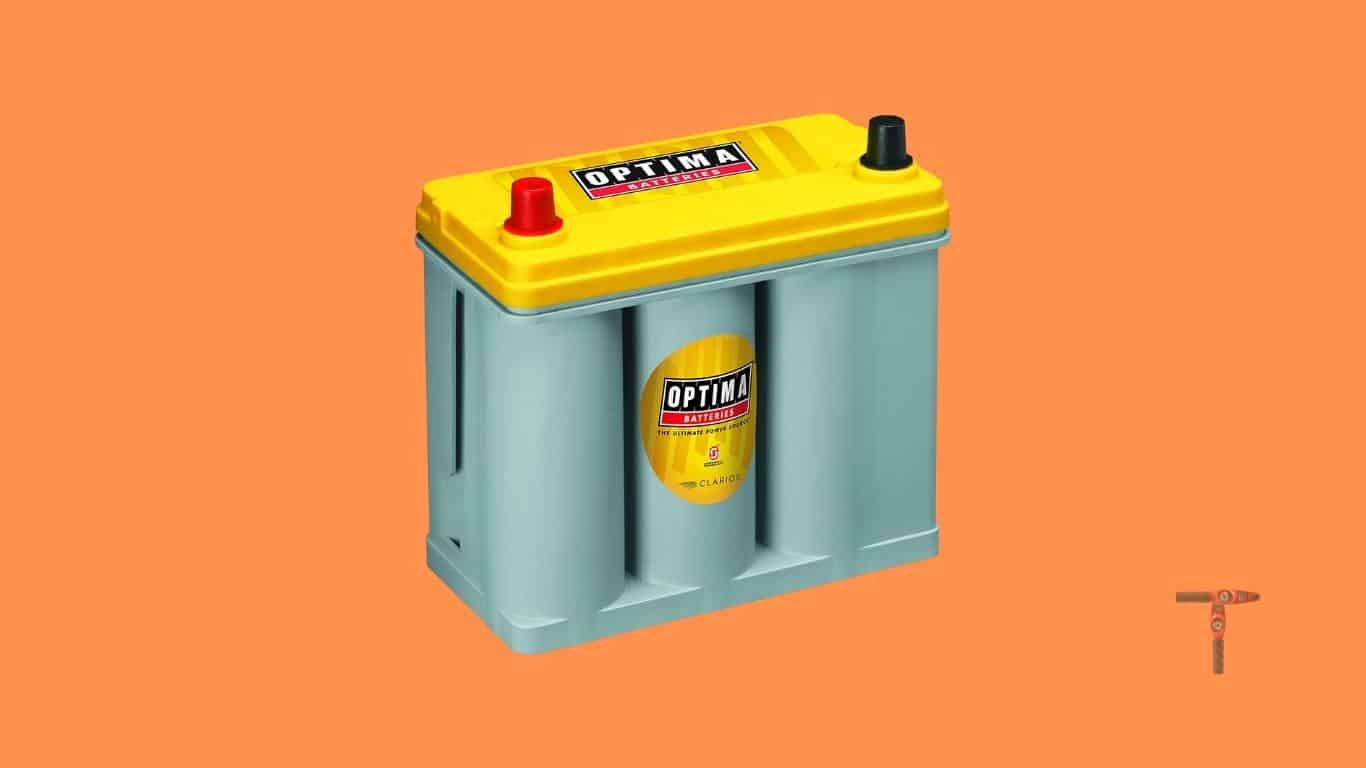
When it comes to compactness, the Optima D51 yellowtop battery is one of the best out there. Large batteries are generally unsuitable for small vehicles with limited space. This is because they are not only unable to fit into the vehicle but are usually overkill for the needs of the vehicle. That’s where this battery comes in.
This battery is very compact and light, weighing a mere 19.36 pounds. Thanks to its leak-proof design, it can be mounted in any position, making it a good fit for most small vehicles. It is a top efficient performing AGM battery with a CCA rating of 450 and a reserve capacity of 66 minutes. Although this relatively low CCA and RC ratings make it unsuitable for larger cars and diesel engines (especially in the cold), it’s still an excellent fit for small gasoline engines.
Additionally, the unit comes with a ‘spiral cell technology’ that promises extra durability. It also has reliable cast cell connections to ensure it works, even in harsh weather conditions. Not only that, but this battery also guarantees a commendable deep-cycling ability and offers ultimate vibration resistance.
Furthermore, this battery is tailored to cars with high-drain electronics or vehicles without alternators, such as racing cars. This is because it allows them to start and run for around an hour without being charged. That being said, it also embraces unparalleled recharging speed and 300+ charging and recharging cycles.

Optima D51 Dual Purpose Battery
- Cold Cranking Amps: 450
- Reserve Capacity (in minutes): 66
- Group Size: 51
- Voltage: 12 Volts
- Weight: 19.36 pounds
- Very light
- Suitable for cars with high-drain electronics
- Can be mounted in any position
- Compact design
- Low CCA and RC ratings
- Only suitable for small cars
Conclusion
If your battery tends to misbehave every Winter, it’s time to consider replacing it with one designed specifically for cold. They’re guaranteed to start first-time in cold weather and will save you a lot of hassle in the long run. Just remember to check the size of the battery before buying to ensure it can fit in your vehicle.
While some situations require a new battery, others only require a recharge. If your battery suddenly dies and you’re unsure if it needs to be recharged or replaced, get in touch with 1-800 Battery. They’ll jumpstart your battery or recommend a new one for your car’s make and model. You can book an appointment with them or schedule an emergency call, depending on your situation.

FAQs
Why Do Batteries Die in Cold Weather?
Car batteries die in the cold for a few reasons. First, chemical reactions slow down, weakening the battery’s power by 30–60%.
Also, the oil in vehicles becomes much thicker, and internal components like radiators, belts, and hoses are strained. This collectively slows down the engine, causing it to require a greater power surge than usual.
Is It Possible to Revive a Frozen Battery?
It depends. When a battery is frozen, the only solution is to warm it up. However, before warming up the battery, you’ll need to visually inspect it for any cracks. If there are any present, you’ll need to replace the battery. If not, you can begin the warming process.
The best way to do this is to aim a portable heater at the battery for about 30 minutes. Allow it to warm up to at least 40 degrees Fahrenheit, and then jumpstart to charge it up if low. Alternatively, depending on the current weather, you can warm your battery by simply opening the hood and exposing it to the sun.
How Long Do Car Batteries Last?
A typical car battery should last anywhere from 3 to 10 years, depending on factors like the battery type, how often it’s used, and the weather it operates under.
Cold weather is a bitter enemy of your car battery. It can reduce its strength by up to 60%, shortening its lifespan. It’s even worse when there are additional power consumers like heating elements, chargers, GPS, etc.
Hence, there are car batteries explicitly designed for cold climates. They’re more durable and won’t be impacted by the weather.
What is the Best Car Battery Brand for Cold Weather?
The best-known brands for producing the best car batteries for cold weather include Optima, Odyssey, and ACDelco. These companies have many years of experience and are popular in the battery industry for high quality and reliability. And you can trust what they say about their product.

